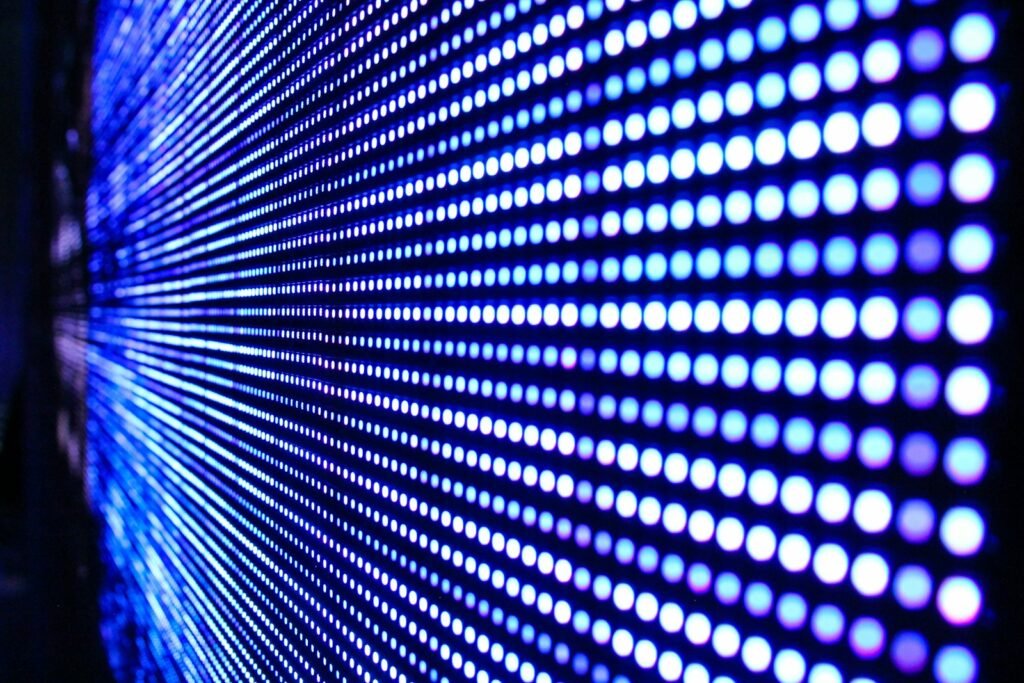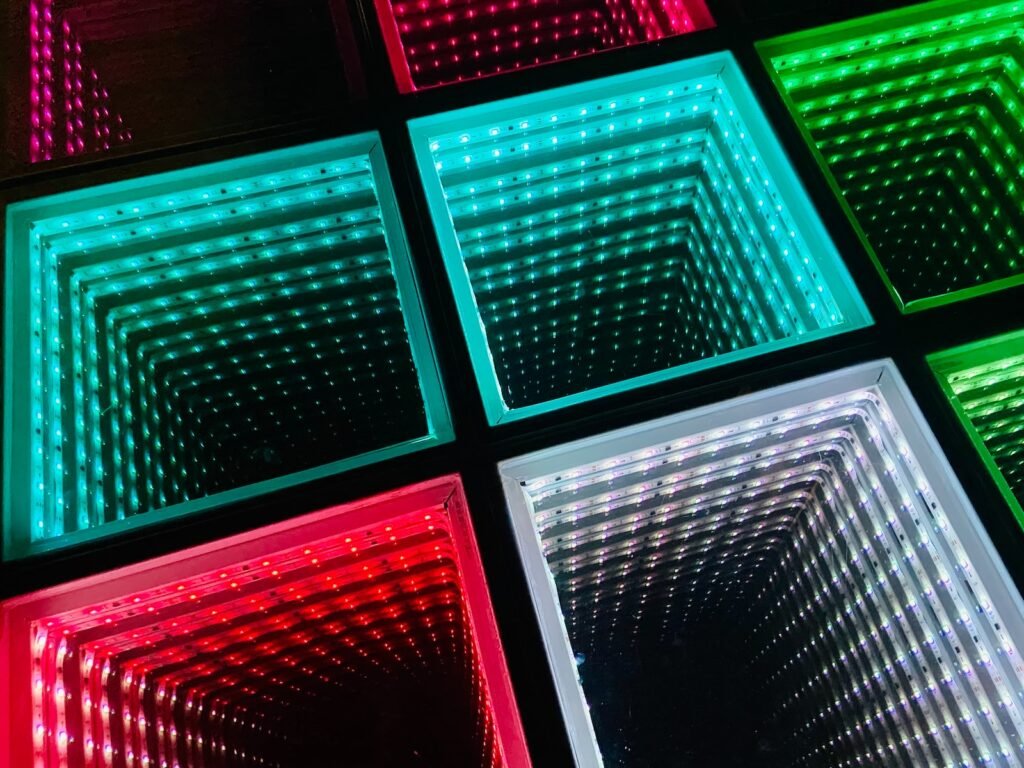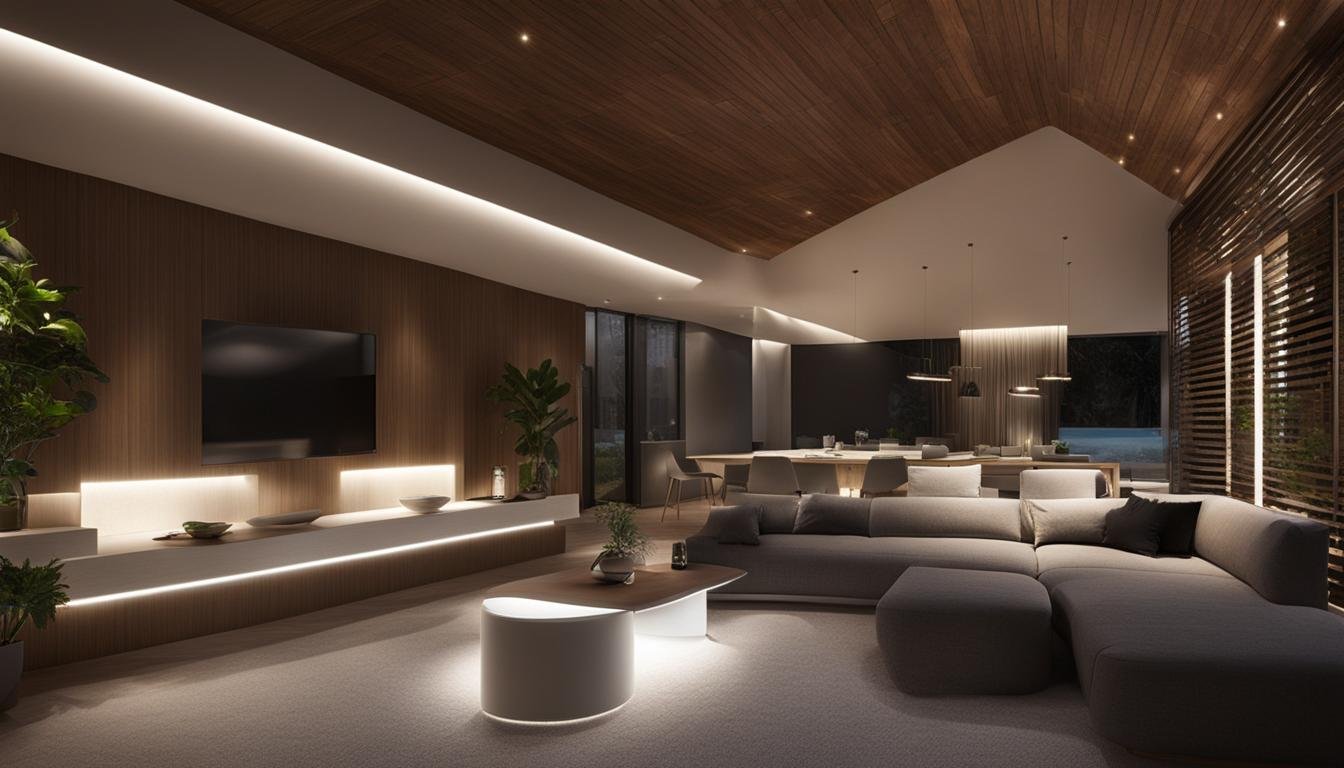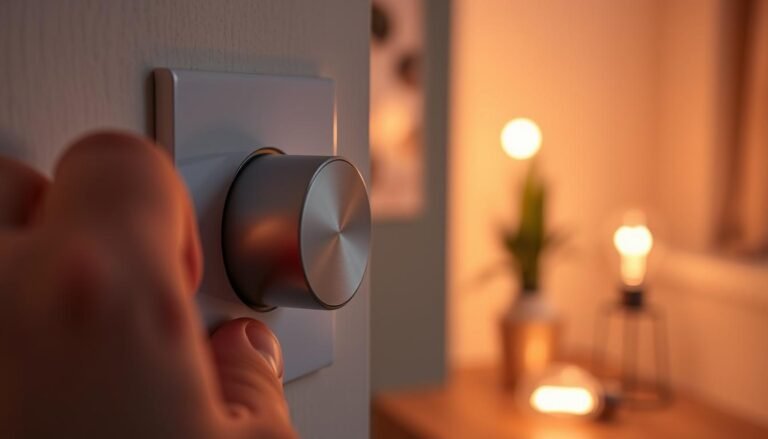Affiliate Disclosure: This post may contain affiliate links. If you make a purchase, we may earn a small commission at no extra cost to you.
Welcome to our informative guide on LED lighting! In this section, we will explore the fundamentals of LED technology, including its advantages over traditional lighting options and its fascinating history. Whether you are looking to upgrade your home or business lighting, understanding the basics of what is LED lighting, it is essential to make an informed decision. So, let’s dive in!
Key Takeaways
- LEDs, or Light Emitting Diodes, are energy-efficient and long-lasting lighting solutions.
- LEDs convert electrical energy into light by passing an electrical current through a microchip.
- Compared to incandescent bulbs, LEDs are more efficient, generate less heat, and have a longer lifespan.
- LEDs come in a wide range of colors and can be used for various lighting applications.
- The future of LED lighting looks promising, with ongoing research focused on improving efficiency and color quality.
Now that we have a basic understanding of LED lighting, let’s explore the different types of LEDs and their applications in the next section.
Brief History of Led Lighting
The history of LED lighting dates back to the early 20th century when British scientist H.J. Round discovered electroluminescence in 1907. However, it wasn’t until the 1960s that practical applications of light-emitting diodes (LEDs) began to emerge.
Nick Holonyak Jr., an American engineer, is often credited with inventing the first practical visible-spectrum LED in 1962 while working at General Electric. Holonyak’s red LED marked a significant milestone in LED technology. Over the next decades, researchers and engineers focused on improving LED efficiency and expanding the color spectrum.
The 1990s saw the development of high-brightness blue LEDs by Shuji Nakamura, which was crucial for creating white light by combining red, green, and blue LEDs. This breakthrough laid the foundation for the widespread adoption of LEDs in various applications.
As LED technology advanced, it became more energy-efficient, durable, and cost-effective. In the 21st century, LEDs gained popularity for general lighting, display screens, and various electronic devices. The shift towards energy-efficient lighting solutions led to the phasing out of traditional incandescent bulbs in many regions.
Today, LED lighting is a dominant force in the lighting industry, offering numerous benefits such as energy savings, longer lifespan, and environmental friendliness. The continuous research and development in LED technology contribute to its ongoing evolution, shaping the future of illumination.
What Is LED Lighting: Types and Applications
LEDs come in various types and variations to cater to different lighting requirements. Understanding the different types of LEDs available can help you choose the right option for your specific application.

1. 5mm LEDs
One common type of LED is the 5mm LED. These LEDs consist of a diode inside a 5mm diameter lens with thin metal legs on the bottom. 5mm LEDs are often used in applications where a lower amount of light is required.
They can operate at lower drive currents, making them suitable for situations where energy consumption needs to be optimized. These LEDs are widely used in indicator lights, small displays, and decorative lighting.
2. Surface Mount LEDs (SMD)
Surface mount LEDs, often referred to as SMD LEDs, are another popular type of LED. These LEDs are designed to be mounted directly onto a circuit board, offering a compact and versatile lighting solution. SMD LEDs come with a silicon dome over the diode, providing protection and enhancing durability
They are available in high-power options from leading manufacturers such as Cree and Luxeon. SMD LEDs are commonly used in applications that require bright and efficient lighting, including automotive lighting, signage, and backlighting for electronic devices.
Here’s a table comparing the key features of 5mm LEDs and Surface Mount LEDs:
| 5mm LEDs | Surface Mount LEDs (SMD) | |
|---|---|---|
| Size | 5mm diameter | Compact and versatile |
| Application | Indicator lights, small displays, decorative lighting | Automotive lighting, signage, electronic device backlighting |
| Brightness | Lower amount of light | Bright and efficient |
| Energy Efficiency | Can run at lower drive currents | High-power options available |
What is LED Brightness and Color Options
When it comes to LED lighting, brightness plays a crucial role. LED brightness is measured in lumens. By increasing the current supply to the LEDs, you can achieve brighter light output.
LEDs also offer a wide range of color options to suit different lighting needs. Apart from the traditional white LEDs available in various color temperatures, there are also colored LEDs that are used for specific applications, such as stage lighting or mood lighting.
Here’s an image showcasing the different color options available for LEDs:
Understanding the various types of LEDs, their applications, brightness levels, and color options can help you make informed decisions when it comes to choosing the right LED lighting solution for your specific needs.
Advantages and Future of LED Lighting
LED lighting offers numerous advantages that make it a superior option compared to traditional lighting technologies. One of the key advantages of LED lighting is its energy efficiency.
LEDs consume less power while producing more light, making them highly energy efficient. This not only reduces electricity bills but also contributes to a more sustainable and environmentally friendly lighting solution.

Another significant advantage is the longer lifespan of LED lighting. Unlike incandescent bulbs that burn out over time, LEDs experience lumen depreciation, meaning they gradually emit less light over an extended period.
This prolonged lifetime ensures that LED lights require less frequent replacements, resulting in cost savings and convenience.
Furthermore, LED lighting is more durable than other lighting options. LEDs are resistant to breakage and vibrations, making them more reliable and suitable for various applications.
Whether it’s for indoor or outdoor use, LED lights can withstand harsh conditions and maintain their performance, providing long-lasting illumination without the need for frequent replacements.
The future of LED lighting looks promising. Ongoing research and development efforts are focused on improving LED efficiency, color quality, and form factor. The goal is to achieve even higher efficacy and widespread adoption of LED technology. With advancements in manufacturing and design, LED lighting has the potential to revolutionize the lighting industry, offering not only significant energy savings but also enhanced lighting experiences for businesses and consumers alike.
FAQ
What is LED lighting?
LED lighting stands for Light Emitting Diode lighting. It is a type of lighting technology that uses diodes to convert electrical energy into light. LEDs offer several advantages over traditional lighting options.
What are the advantages of LED lighting?
LED lighting is energy-efficient, generates less heat, and has a longer lifespan compared to incandescent bulbs. LEDs also come in a wide range of colors and can be easily dimmed and controlled for further energy savings.
How do LEDs compare to incandescent bulbs?
LEDs are more energy-efficient and have a significantly longer lifespan than incandescent bulbs. They also produce more light while consuming less power.
What types of LEDs are available and what are their applications?
There are different types of LEDs available, including 5mm LEDs and surface mount LEDs (SMD). 5mm LEDs are used in applications where lower light output is required, while SMD LEDs can be placed on circuit boards and offer high-power options. LEDs also come in various colors for different lighting needs.
How is LED brightness measured?
LED brightness is measured in lumens. The higher the current supply, the brighter the light output.
What is the future of LED lighting?
The future of LED lighting looks promising, with ongoing research and development focused on improving efficiency, color quality, and form factor. The goal is to achieve even higher efficacy and widespread adoption of LED technology.
Check out our FREE Calculators on our Resources Page
Source Links
- https://www.energystar.gov/products/lighting_fans/light_bulbs/learn_about_led_bulbs
- https://www.ledsupply.com/blog/what-you-need-to-know-about-leds/
- https://www.energy.gov/eere/ssl/led-basics




